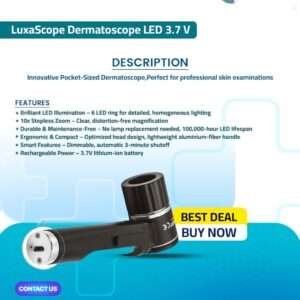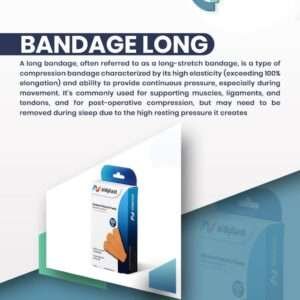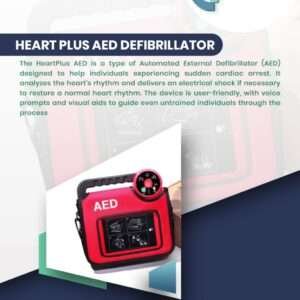Dental Equipment supplier in UAE
In the UAE, the importance of dental equipment extends beyond mere functionality; it plays a pivotal role in the overall healthcare system and the well-being of individuals. As the country continues to advance its healthcare infrastructure, dental equipment has become a critical component in ensuring high standards of oral health care. Choosing a reliable Dental Equipment supplier in UAE ensures that dental clinics and hospitals have access to advanced tools and technologies necessary for delivering top-quality care. Dental equipment is fundamental in delivering effective and efficient dental treatments. In a region where healthcare standards are continually improving, having access to advanced dental tools from a trusted Dental Equipment supplier in UAE is essential for providing top-notch care. Modern dental equipment, such as digital radiography systems, laser technology, and advanced dental chairs, enables practitioners to diagnose and treat a wide range of dental conditions with greater precision and comfort. This not only enhances the quality of care but also improves patient outcomes through more accurate diagnostics and effective treatments. The importance of dental equipment in the UAE is also reflected in the growing demand for specialized and technologically advanced tools. With the increasing prevalence of dental issues and rising awareness of oral health, there is a need for equipment that can support both preventive and corrective treatments. Sophisticated imaging systems like intraoral cameras and 3D scanners, provided by leading Dental Equipment suppliers in UAE, offer detailed insights into dental health, allowing for early detection of problems and personalized treatment plans. This advancement in technology helps address the needs of a diverse population and supports the country's efforts to maintain high standards of dental care. Furthermore, dental equipment is crucial for the efficiency and safety of dental practices. High-quality sterilization units and infection control systems, supplied by reliable Dental Equipment suppliers in UAE, are essential for maintaining hygiene and preventing cross-contamination in dental clinics. This is particularly important in the UAE, where healthcare facilities are held to rigorous standards of cleanliness and safety. Reliable and efficient equipment ensures that dental procedures are performed safely and reduces the risk of complications associated with inadequate sterilization. In addition to improving clinical outcomes, dental equipment contributes to the overall patient experience. Comfortable and user-friendly equipment, such as ergonomic dental chairs and advanced patient monitoring systems, enhances patient comfort and reduces anxiety during treatments. A positive patient experience is crucial in building trust and satisfaction, leading to better patient retention and referrals. The development of dental equipment also aligns with the UAE's vision of becoming a global leader in healthcare innovation. By investing in cutting-edge dental technology through reputable Dental Equipment suppliers in UAE and incorporating it into everyday practice, the UAE is not only improving its healthcare services but also setting a benchmark for other countries. This focus on innovation supports the country's broader goals of enhancing healthcare quality and fostering a culture of excellence. In summary, dental equipment is of paramount importance in the UAE for its role in advancing oral health care, improving clinical outcomes, ensuring safety, and enhancing the patient experience. Working with a trusted Dental Equipment supplier in UAE ensures that healthcare providers have access to reliable, advanced, and efficient tools, supporting the delivery of high-quality, patient-centered dental services across the country.
Wellcare Medical Equipment LLC is a well-established company specializing in the supply of medical and dental equipment across the United Arab Emirates. The company has built a strong reputation for delivering high-quality products and exceptional customer service in the healthcare sector.
Key Offerings
Dental Equipment:
- Dental Chairs: Comfortable and ergonomically designed chairs that ensure the best position for both the patient and the dentist.
- X-Ray Machines: Advanced imaging systems for accurate diagnostics and patient care.
- Sterilizers: Essential equipment for maintaining hygiene and preventing cross-contamination in the dental practice.
- Handpieces: High-speed and low-speed dental handpieces designed for precision and durability.
- Curing Lights: Devices used to harden dental materials quickly and efficiently.
- Diagnostic Tools: Tools such as intraoral cameras and digital sensors that aid in the diagnosis and treatment planning.
Medical Equipment:
- Diagnostic Equipment: Including devices for monitoring vital signs, ECG machines, and blood pressure monitors.
- Surgical Instruments: A range of high-quality surgical tools and accessories.
- Patient Monitoring Systems: Equipment for continuous monitoring of patient health parameters.
For more details or to inquire about their products and services, you can contact Wellcare Medical Equipment LLC directly through their website or customer service channels. They provide personalized assistance and support to meet the diverse needs of dental and medical professionals.
Can Well Care assist with installation and setup of dental equipment?
Yes, Well Care offers complete installation, setup, and maintenance services, ensuring that dental equipment is properly installed and fully operational for clinic use.
Can Well Care assist with installation and setup of dental equipment?
Yes, Well Care offers complete installation, setup, and maintenance services, ensuring that dental equipment is properly installed and fully operational for clinic use.




